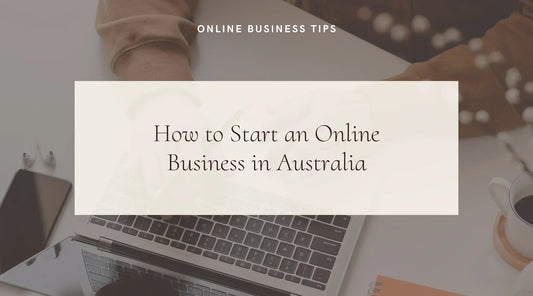Starting an online business has never been more accessible. In fact, Shopify powers over 4.5 million e-commerce websites worldwide, making it one of the most trusted platforms for entrepreneurs. If you're thinking about launching your own Shopify store, this guide will walk you through every step of the process in a clear and actionable way.
Let’s dive in!
Why Choose Shopify?
Shopify isn’t just another e-commerce platform—it’s an all-in-one solution that simplifies online selling. Here’s why it stands out:
- Ease of Use – No coding required! Shopify’s drag-and-drop editor makes store setup simple.
- Scalability – Whether you're just starting out or scaling to millions in revenue, Shopify grows with you.
- Customisability – Choose from a wide range of free and premium themes to match your brand.
- Built-in Marketing Tools – Email marketing, SEO, and social media integrations are all included.
- Secure Payments – Shopify Payments and third-party gateways ensure seamless transactions.
With Shopify, you can build a professional e-commerce website without the technical headaches. Now, let’s get your store up and running!
Pre-Launch Considerations
Before setting up your Shopify store, take the time to plan these critical aspects of your business:
1. Validate Your Business Idea
Not all products sell well online. Research your competitors, analyze market demand, and ensure your offering has a unique selling point (USP) that sets it apart.
2. Choose a Store Name & Domain
Your store’s name is part of your brand identity. Pick something memorable, easy to spell, and aligned with your niche. Secure a custom domain (e.g., yourstorename.com) for a professional touch.
3. Define Your Brand Identity
Your brand is more than just a logo—it’s the voice, visuals, and experience you create. Consider these elements:
- Logo & Colour Scheme – Keep it simple and cohesive.
- Messaging & Tone of Voice – How will you communicate with customers?
- Visual Identity – Will you use minimalist aesthetics, bold graphics, or a luxury feel?
4. Identify Your Target Audience
Who are your ideal customers? Define their age, interests, shopping behaviours, and pain points. This will help tailor your store’s design, product descriptions, and marketing strategies.
Steps to Start a Shopify Store
Step 1: Sign Up for Shopify
- Go to Shopify’s website and start a 3-day free trial.
- Enter your email, store name, and a few details about your business.
- Once inside the Shopify dashboard, follow the guided setup to configure your store.
Step 2: Choose a Shopify Plan
Shopify offers different plans based on your needs:
- Basic ($42AUD/month) – Best for new businesses.
- Shopify ($114AUD/month) – Great for growing stores.
- Advanced ($431AUD/month) – Ideal for scaling businesses.
Additional costs may include paid themes, apps, and transaction fees, depending on your payment gateway.

Shopify Plans, Feb 2025 | Image via Shopify
Step 3: Select a Domain Name
- You can buy a custom domain directly through Shopify or use a third-party registrar (like GoDaddy or Namecheap).
- If you’re not ready to purchase a domain, Shopify provides a free myshopify.com subdomain.
Step 4: Pick and Customise a Theme
Your store’s design plays a crucial role in conversion. Shopify offers free and premium themes, but if you want a professional, high-converting look, consider That Branding Co.’s Shopify Themes. These themes are designed to look great out of the box, so with just a few tweaks, your store will be launch-ready!
- Customise Your Theme: Adjust colors, fonts, and layouts.
- Optimise for Mobile: Ensure your site looks great on all devices.
 Natura Shopify Theme | That Branding Co.
Natura Shopify Theme | That Branding Co.
Step 5: Add Products
- Navigate to Products > Add Product in the Shopify admin.
- Upload high-quality images and write compelling product descriptions.
- Set pricing, inventory, and shipping options.

Adding Products to Shopify Store
Step 6: Set Up Payment Gateways
Shopify Payments (available in many countries) allows you to accept credit cards without extra transaction fees. You can also integrate PayPal, Stripe, and other third-party providers.
Step 7: Configure Shipping
- Define shipping rates and zones.
- Offer free shipping, flat-rate, or real-time carrier rates.
- Consider adding local delivery or in-store pickup options if relevant.
Step 8: Test Your Store
Before launching, conduct a full test:
- Place a test order to ensure checkout works smoothly.
- Check for broken links and missing images.
- Review store policies (refund, shipping, privacy) for legal compliance.
- Step 9: Launch Your Store!
- Remove password protection (Settings > Preferences > Disable Password).
- Promote your launch through social media, email marketing, and paid ads.
- Consider offering an exclusive discount to attract first-time customers.
Final Thoughts
Launching a Shopify store is an exciting journey, and with the right strategy, you can turn your online business into a thriving brand. Whether you’re selling handmade goods, dropshipping, or launching a full-scale e-commerce website, Shopify provides all the tools you need to succeed.
Need a Shopify theme that’s built for conversions? Check out That Branding Co.’s professionally-designed Shopify themes and get started today!
Happy selling!



